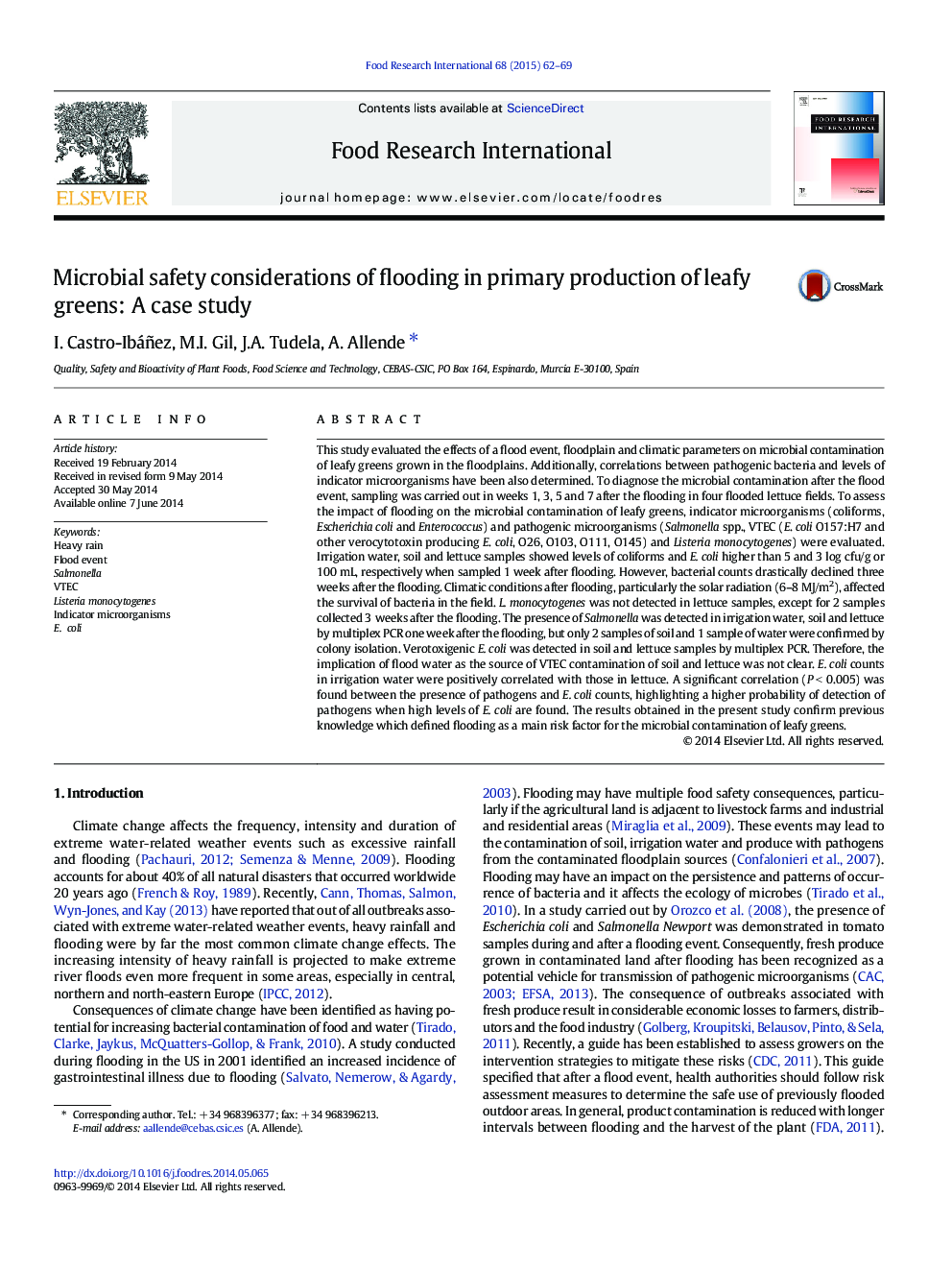| کد مقاله | کد نشریه | سال انتشار | مقاله انگلیسی | نسخه تمام متن |
|---|---|---|---|---|
| 6395684 | 1628478 | 2015 | 8 صفحه PDF | دانلود رایگان |
- Four flooded lettuce fields were sampled 1, 3, 5 and 7Â weeks after the flood event.
- Coliform (>6 logs) and E. coli (>·3 logs) levels were found after flooding.
- The initial coliform and E. coli levels drastically declined after 3Â weeks.
- The high solar radiation seemed determinant for the bacterial reduction.
- Salmonella was detected by multiplex PCR in water, soil and lettuce after flooding.
- The probability of pathogen detection was higher with high indicator levels.
This study evaluated the effects of a flood event, floodplain and climatic parameters on microbial contamination of leafy greens grown in the floodplains. Additionally, correlations between pathogenic bacteria and levels of indicator microorganisms have been also determined. To diagnose the microbial contamination after the flood event, sampling was carried out in weeks 1, 3, 5 and 7 after the flooding in four flooded lettuce fields. To assess the impact of flooding on the microbial contamination of leafy greens, indicator microorganisms (coliforms, Escherichia coli and Enterococcus) and pathogenic microorganisms (Salmonella spp., VTEC (E. coli O157:H7 and other verocytotoxin producing E. coli, O26, O103, O111, O145) and Listeria monocytogenes) were evaluated. Irrigation water, soil and lettuce samples showed levels of coliforms and E. coli higher than 5 and 3 log cfu/g or 100 mL, respectively when sampled 1 week after flooding. However, bacterial counts drastically declined three weeks after the flooding. Climatic conditions after flooding, particularly the solar radiation (6-8 MJ/m2), affected the survival of bacteria in the field. L. monocytogenes was not detected in lettuce samples, except for 2 samples collected 3 weeks after the flooding. The presence of Salmonella was detected in irrigation water, soil and lettuce by multiplex PCR one week after the flooding, but only 2 samples of soil and 1 sample of water were confirmed by colony isolation. Verotoxigenic E. coli was detected in soil and lettuce samples by multiplex PCR. Therefore, the implication of flood water as the source of VTEC contamination of soil and lettuce was not clear. E. coli counts in irrigation water were positively correlated with those in lettuce. A significant correlation (P < 0.005) was found between the presence of pathogens and E. coli counts, highlighting a higher probability of detection of pathogens when high levels of E. coli are found. The results obtained in the present study confirm previous knowledge which defined flooding as a main risk factor for the microbial contamination of leafy greens.
Journal: Food Research International - Volume 68, February 2015, Pages 62-69
